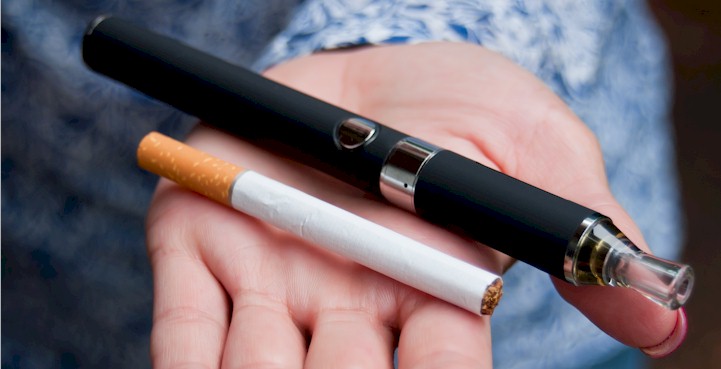Lesson 11
Lesson 15 Module 5
Introduction
In this module, we will focus on another drug that is commonly used by young women: nicotine. Because of the introduction of new forms of delivering nicotine and nicotine-containing products to young women, such as vaping/e-cigarettes, it is a growing concern.
As you probably already know, nicotine is a very harmful and addictive substance. Currently there are attempts to make nicotine seem less harmful if used through electronic devices. But nicotine is nicotine, whether inhaled via traditional cigarette, e-cigarette, or vape pen.
The part of the brain that’s responsible for decision-making and impulse control is not yet fully developed during adolescence and young adulthood. Young people are more likely to take risks with their health and safety, including the use of nicotine and other drugs. Youth and young adults are also uniquely at risk for long-term, long-lasting effects of exposing their developing brains to nicotine. These risks include nicotine addiction, mood disorders, and permanent lowering of impulse control. Nicotine also changes the way synapses are formed, which can harm the parts of the brain that control attention and learning.
For a young woman who may become pregnant or who is pregnant, any level of nicotine is harmful to both herself and her developing fetus.

Rates of Nicotine Use
Each and every day adolescents begin smoking. The majority of current smokers began using nicotine and tobacco before the age of 18. Of those who begin smoking, about 15% or so will continue to smoke across their lifespan. (1) 4,000 adolescents age 12-17 begin smoking in the U.S. every day, and 15% of adults continue to smoke. (2,3)
Did You Know:
Smoking can make the skin on your face sag and discolor over time, making you look older than you really are. Also, consider how expensive smoking or vaping can be over time and all of the other things you could spend your money on instead.
Use of nicotine products is addictive and dangerous. Almost a half million adults die from their use of tobacco and nicotine products every year. Along with those deaths, tens of thousands more will die from exposure to secondhand smoke (or passive exposure). When someone smokes, that vapor settles on surfaces in the car and home, and is inhaled by anyone else who is around that cigarette/nicotine user.

Did You Know:
Most smokers begin this addictive behavior before they turn 18. Think about when you or your friends first tried smoking or vaping.
Nicotine and Pregnancy
Besides being dangerous and addictive, there is an additional concern from tobacco/nicotine use for young women. Smoking or nicotine use, whether via vaping or traditional cigarette, is very unhealthy for a pregnant woman.
Of young women who smoke or vape nicotine products and become pregnant, about half will not be able to quit.4 This is because nicotine is an incredibly addictive drug. About half will continue to use nicotine and therefore expose the developing fetus to nicotine and its by-product, called cotinine.
When a pregnant woman uses nicotine, in whatever form, she exposes the fetus to high concentrations of this dangerous drug. Nicotine and cotinine pass through the many barriers that a pregnant young woman’s body puts up to protect that fetus. It is found in both mother and baby’s bloodstream, as well as the amniotic fluid that is protecting the baby in the womb.
Also, although breastfeeding is the ideal way to

feed and nourish an infant, nicotine and cotinine will also be found in the breast milk of a young woman who continues to smoke/vape.
Did You Know:
Nicotine and its by-product, cotinine, are found in baby's fluids at 15% higher concentrations than in mom's blood and last for 15 to 20 hours. (5)
Nicotine and Low Birth Weight
Tobacco use during pregnancy is the largest preventable cause of prematurity and low birth weight, and low birth weight is one of the most common causes of infant death. Low birth weight can increase the chance that a baby has issues breathing, bleeding in their brain, heart and intestine issues, and more infections.
Infants born to smokers have a much greater chance of being born too small and too early: weighing 7 - 10 ounces less may not seem like much, but when you only weigh 6 or 7 pounds,
it is actually very important!

Did You Know:
Smokers’ newborns weigh an average of 200 to 300 grams (7-10 ounces) less than nonsmokers. (6)
